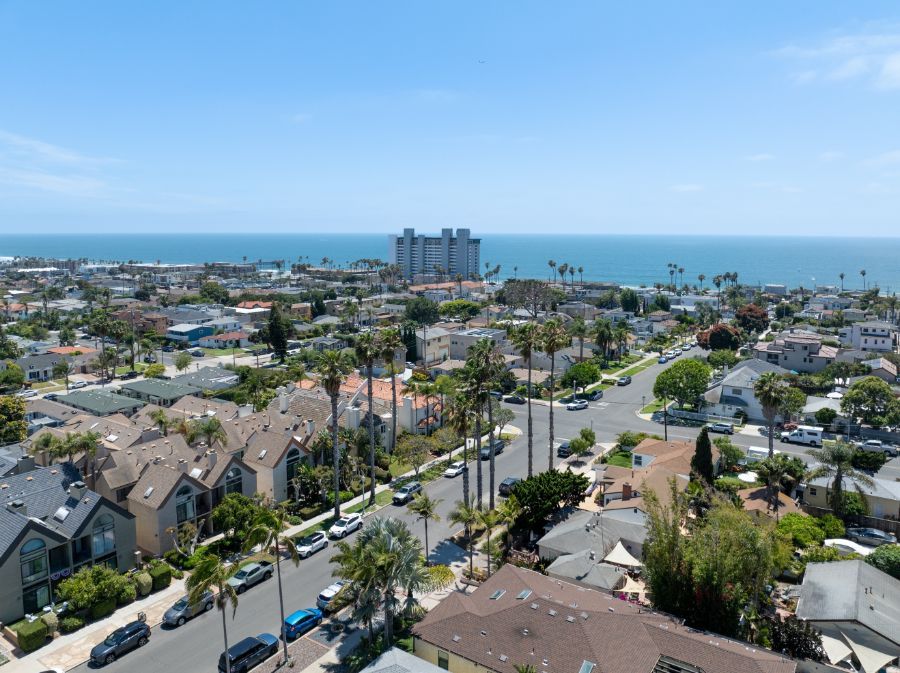Maintenance Items for Beach Front Properties

Maintenance is inescapable regardless of what kind of property you own. However, beachfront property maintenance is a bit more involved due to the proximity to the ocean. Not only will you need to keep in mind the added corrosion of the salt in the air, but you’ll also need to consider the added moisture, winds, and sun.
Today, we will give you a list of seven maintenance items you should prioritize for beachfront properties.
Preventative Rain and Storm Maintenance
Southern California has fallen into a pattern of severe drought followed by extremely wet weather. For this reason, it's important to ensure your beachfront home is ready for any condition. Typically, you’ll want to check your roof for leaks or any inconsistency every three years. It's recommended that homeowners inspect their rain gutters and drainage systems yearly. Especially after dealing with a drought, many elements of these systems are overlooked when the state is dealing with a drought.
Saltwater Corrosion Control
Corrosion caused by the ocean salt can feel unavoidable at beachfront properties. However, there are many ways for landlords to protect their investment properties from the salt. It's a good idea to visually inspect the property, whether yourself or a professional, to check for areas that commonly corrode due to the salt. Metal hardware will frequently seize or begin to squeak if they’re not lubricated regularly. Although a spray of WD-40 can suffice for most applications, it's recommended to use marine sprays and lubricants made for homes on the beach. If the hardware has begun to rust, you may need to replace it or coat it with an anti-rust coating.
HVAC Maintenance
HVAC systems on beachfront properties usually require more maintenance than properties inland. Wind can blow sand and saltwater into an HVAC unit, causing a much shorter lifespan. While there are some preventative measures you can take, such as protecting the HVAC unit from the elements with covers and fencing, you’ll need to inspect the unit more often than with non beachfront properties.
Pest Control
Many pests prefer moist environments, making beachfront properties a perfect nesting ground for cockroaches, rodents, ants, termites, and more. These pests can cause thousands of dollars in damages if left unchecked. Inspecting for pests should be done regularly every three months or whenever a tenant notices them. It's important to ensure they are taken care of quickly, as the longer they are allowed to infest a property, the harder it is to get rid of them.
Mold and Mildew Control
Moisture from the beach also provides a great environment to grow mold and mildew. Not only should you inspect the home for fungal growth, but you should also ensure bathroom exhaust fans are working properly. Because salt and moisture can get into the motor of bathroom fans, these should be inspected regularly. Depending on the humidity levels, homes may need monthly inspections for mold and mildew.
Safety Device Inspection
It's common for people to forget about their smoke and carbon monoxide detectors when living in beachfront properties. Yet these are life-saving devices that need to be in working condition. Moisture can cause these devices to short-circuit or batteries to corrode. It is best practice to inspect the devices monthly and ensure there are extra batteries if necessary.
Inspect the Exterior Paint
Being right next to the ocean can be relaxing. Nevertheless you should ensure the exterior paint can keep up with the beach weather. There is little protection from the sun next to the beach, and heavy winds can make sand act like an abrasive when hitting your home. For this reason, exterior paint tends to flake more often. Paint isn’t just to maintain curb appeal; it acts as a barrier to the elements. This means even high-quality paint may need to get touched up, or the home may require a repaint as often as four or five years.
Keeping up with beachfront property maintenance can be a handful but well worth it. If you need help managing your beachfront maintenance, we invite you to call us today at (562) 888-0247 or fill out our
Owner Application online.





